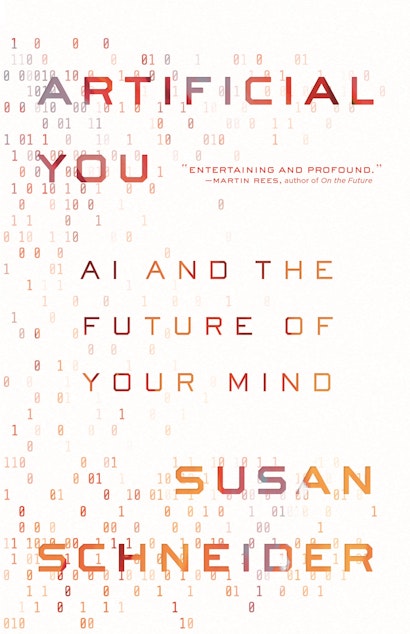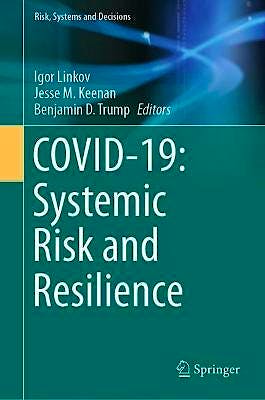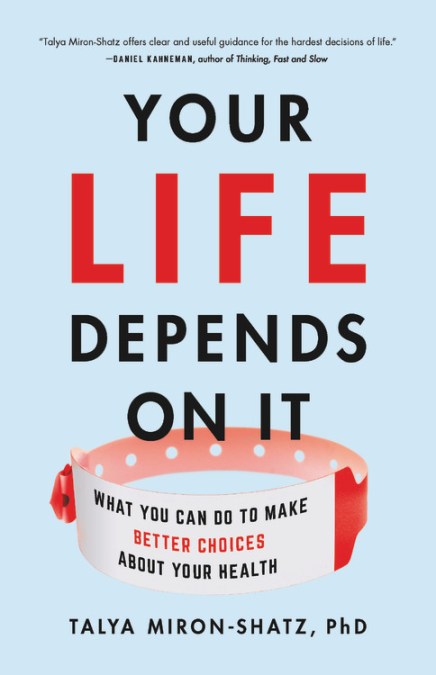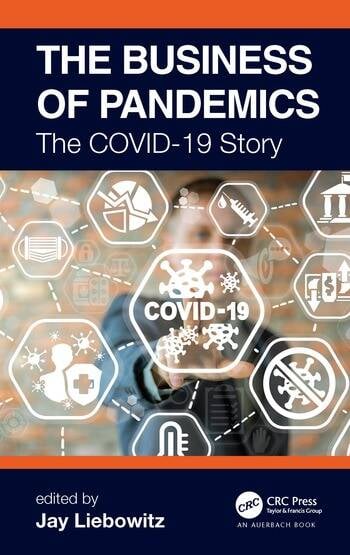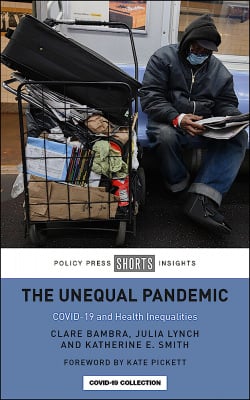Artificial You: AI and the Future of Your Mind
19 d’octubre 2021
18 d’octubre 2021
AI everywhere
A Citizen’s Guide to Artificial Intelligence
A book on how algorithmic tools are being used in areas ranging from health care, law and social services to social media and business, and it explains the basic technical components of AI in a jargon-free manner.
In chapter 10, on AI regulation:
We need new rules for AI, but they won’t always need to be AI-specific. As AI enters almost every area of our lives, it will come into contact with the more general rules that apply to commerce, transport, employment, healthcare, and everything else.
Nor will we always need new rules. Some existing laws and regulations will apply pretty straightforwardly to AI (though they might need a bit of tweaking here and there). Before we rush to scratch-build a new regulatory regime, we need to take stock of what we already have.
AI will, of course, necessitate new AI-specific rules. Some of the gaps in our existing laws will be easy to fill. Others will force us to revisit the values and assumptions behind those laws. A key challenge in fashioning any new regulatory response to technology is to ensure that it serves the needs of all members of society, not just those of tech entrepreneurs and their clients, or indeed those of any other influential cohort of society.
14 d’octubre 2021
Algorithms: the underpinning of black box medicine?
The rapid growth of digital devices, software and technologies means that the medical device sector is changing. Many small and independent manufacturers are encountering medical device regulation for the first time. At the same time, responsive and effective regulation of digital devices requires sound understanding of the underlying new technologies and concepts.
Algorithms as medical devices describes how digital health is covered by existing medical device regulation and outlines three critical areas:
The challenges that the digital health sector may pose for regulators and developers
How digital devices can be regulated as medical devices under UK/EU and US law
The specific problems that machine learning could pose to medical device regulation
Meanwhile the market for black box medicine is growing, unless any regulator leaves their continous vacation.
10 d’octubre 2021
Covid in Latin America
Pandemia y crisis: el covid-19 en América Latina
La irrupción del coronavirus (Covid-19) ha provocado una multi-crisis sin precedentes. Sus consecuencias son globales y abarcadoras, aunque tengan particularidades en las diferentes regiones del mundo que la enfrenten en condiciones muy desiguales. Van más allá de un tema de salud debido a las repercusiones tan variadas y complejas. En este volumen se reúnen investigaciones desde las Ciencias Sociales y Humanidades que miden los impactos de la crisis sanitaria y de las medidas gubernamentales en América Latina y el Caribe durante la fase inicial de propagación de la enfermedad. Se analizan diferentes estrategias de políticas públicas y se mira cómo las desigualdades en torno al Covid-19 giran por diferentes lados; grupos específicamente vulnerables y efectos sobre subsistemas relevantes. Además, las investigaciones se enfocan en los discursos que circulan en el espacio público en relación con la crisis sanitaria que a su vez muestra las diferentes voces y posiciones en torno a la pandemia.
09 d’octubre 2021
08 d’octubre 2021
07 d’octubre 2021
06 d’octubre 2021
The role of hospitals
Understanding Hospitals in Changing Health Systems
The health policy community has for decades opposed the roles of primary care and population health against those of hospitals, blinding us about how to govern and resource our health sectors properly
Gathering together expensive people and pieces of equipment in hospitals enables a delivery of care now and in the future which complements yet goes beyond what simpler settings can offer
03 d’octubre 2021
01 d’octubre 2021
The business of pandemics
THE BUSINESS OF PANDEMICS. The COVID-19 Story
Contents:
Chapter 1. Business and Management Lessons Learned from COVID-19
Jaime Ribera, IESE, Spain
Chapter 2. Developing Big Data, Computer Models, and Simulations for Predicting Its Spread
Scott Nestler, University of Notre Dame and Harrison Schramm, Center for Strategic and Budgetary Assessment, USA
Chapter 3. Conducting Global Business Virtually
Erin Makarius and Debmalya Mukharjee, University of Akron, USA
Chapter 4. Global Economic Impact Resulting from COVID-19
Thomas Hanson, Butler University, USA
Chapter 5. Communicating About COVID-19: Dealing with Fear and Emotion
Vincent Covella and Randall Hyer, Center for Risk Communication, USA
Chapter 6. Media and Communications About COVID-19: A WHO Perspective
John Butler and Gabriella Stern, WHO, Switzerland
Chapter 7. Growing Organizational Capacities for Increased Online Learning, Working, and Health
Sharif Nijim, University of Notre Dame and Paul Grist, Amazon Web Services (AWS)
Chapter 8. Social Impact Resulting from COVID-19
Wei Sun, Howard University, and Andrew Critchfield, Independent Scholar
Chapter 9. Online Learning and Educational Innovations Due to COVID-19
Darleen Opfer and Laura Hamilton, RAND Corporation, USA
Chapter 10. The New Work from Home Environment
David Cook, University College London (UCL), UK
Chapter 11. Re-Opening Markets and Businesses that Have Been Shut or Severely Curtailed
Rod McSherry and Matthew Jackson, University of Texas at San Antonio, USA
Chapter 12. Crisis Decision Making Using Analytics and Intuition
Gloria Wren, Loyola University-Maryland; Jean-Charles Pomerol, Université de la Sorbonne, Paris; Fred Adam and Karen Neville, UCC, Ireland
30 de setembre 2021
29 de setembre 2021
The pandemic in US
Uncontrolled Spread. Why COVID-19 Crushed Us and How We Can Defeat the Next Pandemic
New book by Scott Gottlieb , former FDA comissioner
COVID revealed dangerous gaps in the US public health preparedness, medical infrastructure, and healthcare system. We lacked the public health capacity and resiliency we thought we had. In the most advanced healthcare system in the world, we ran out of medical masks. We had to retrofit anesthesia machines and turn them into respirators. We didn’t have enough swabs to collect samples from patients’ noses.
Our system was set up well to handle singular, technology-intensive, and complex problems like developing a novel vaccine or antibody drugs. We do this better than anyone. But it faltered when we were faced with more mundane problems like manufacturing those vaccines in bulk, deploying testing centers, or making nose swabs to collect respiratory samples. When we finally developed safe and effective therapeutics and vaccines that could treat or prevent infection, we couldn’t manufacture enough of them in time to supply the nation for the winter surge. We had to set up elaborate rationing schemes. Then, we were unable to establish an efficient distribution plan. Antibody drugs went unused because we couldn’t deliver them.
The virus made clear that we’ll need to fundamentally alter the way we approach all of these risks. If we don’t, our society will remain excessively vulnerable. For starters, we’ll have to lean much more on our intelligence agencies, and in a different fashion. International agreements alone haven’t provided us with the information we need about emerging threats. There’s little reason to believe they’ll perform much better in the future. The devastation caused by the pandemic proved that these risks, and our preparedness for them, is a matter of national security on par with other threats. We’re going to have to build the capacity to seek out the information we need to protect ourselves. Sometimes that will demand that we avail ourselves of the tools and tradecraft of our clandestine services. The challenge will be to maintain collaboration and multilateral efforts even as we turn more heavily toward intelligence services to guard against the risk of new contagions.
